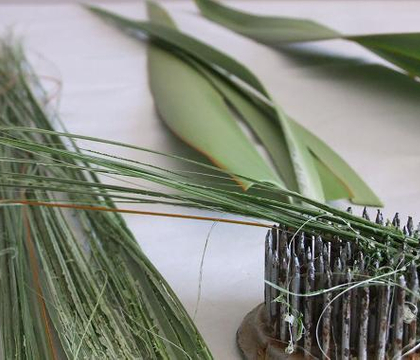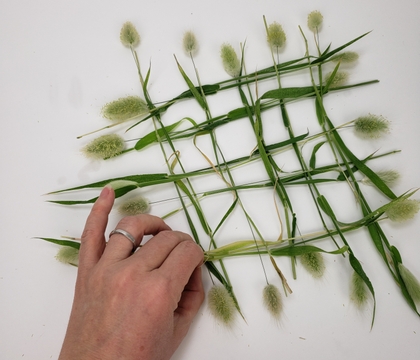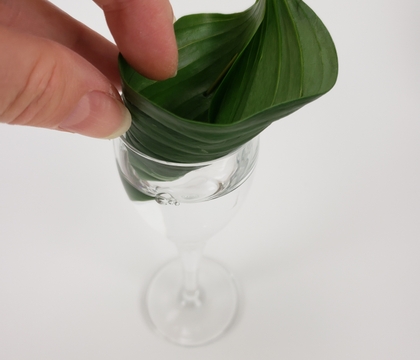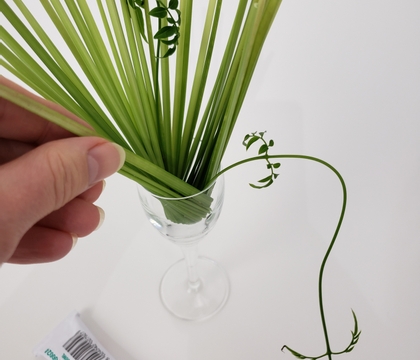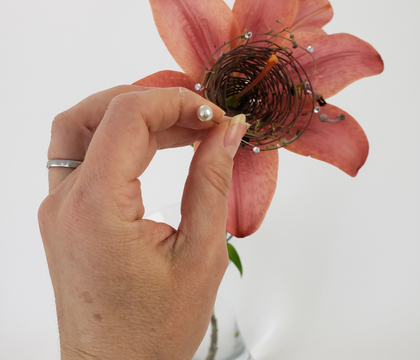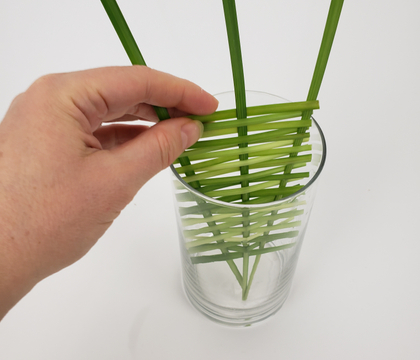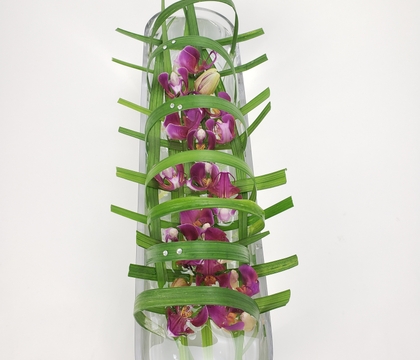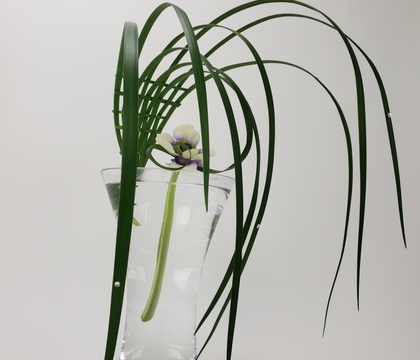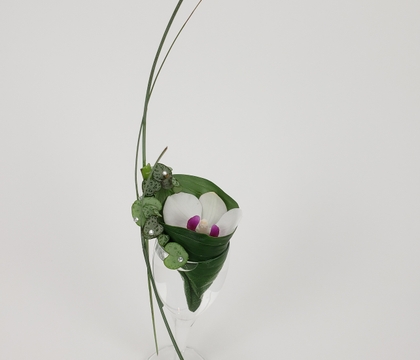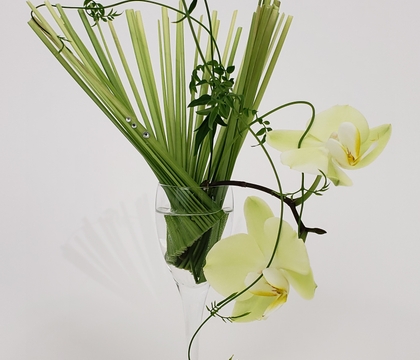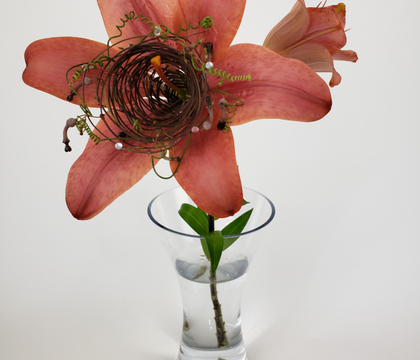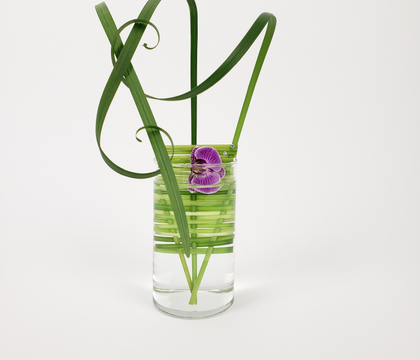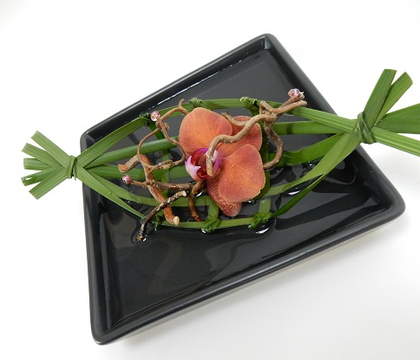Christine de Beer - effortless floral craftsman
Flower catcher
- 23 April 2014
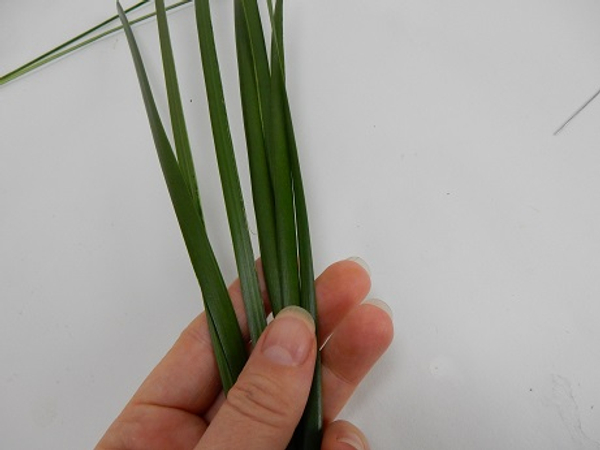
Cut a few sections of palm leaves.
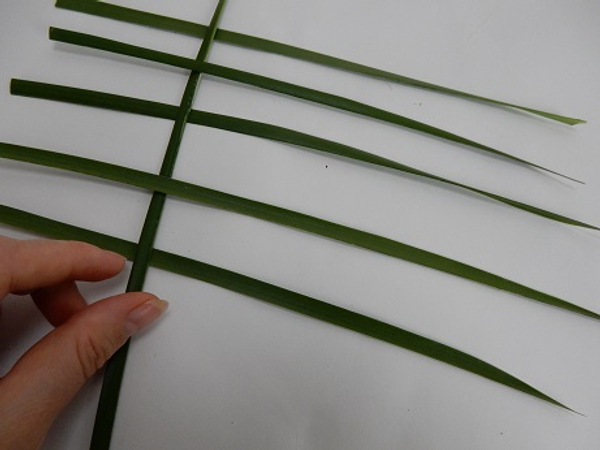
Place 5 palm leaves in a horizontal position and start weaving another leaves through it.
I used a basic over-and-under pattern. See the Tutorial below for more details on weaving with foliage
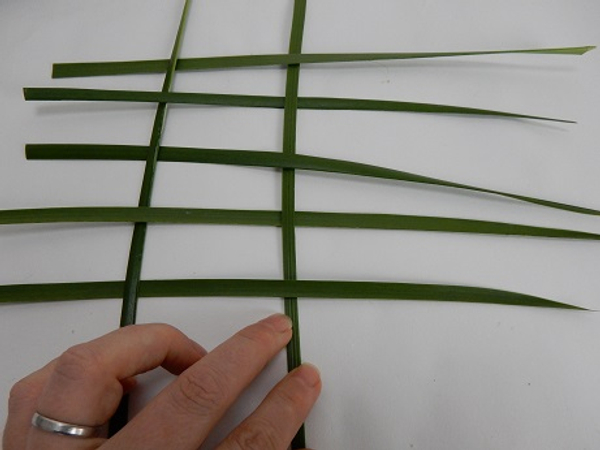
Weave in another section of palm
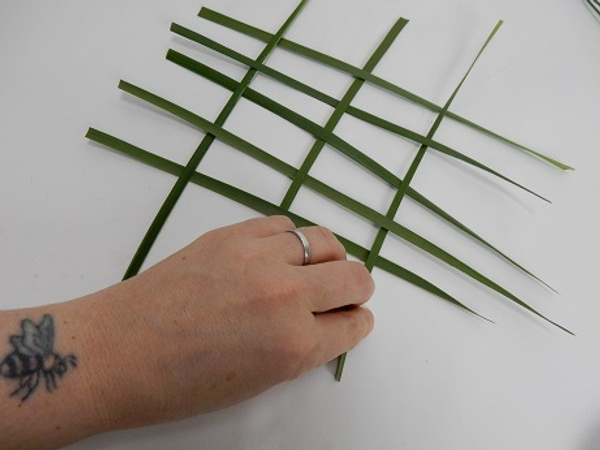
Weave in a third palm leave
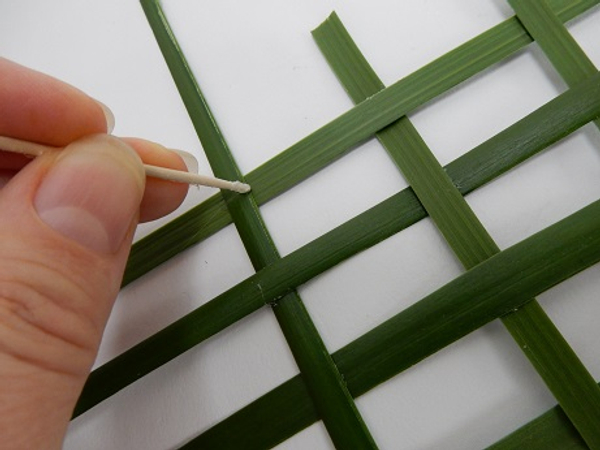
Secure the palm leaves with a tiny drop of glue
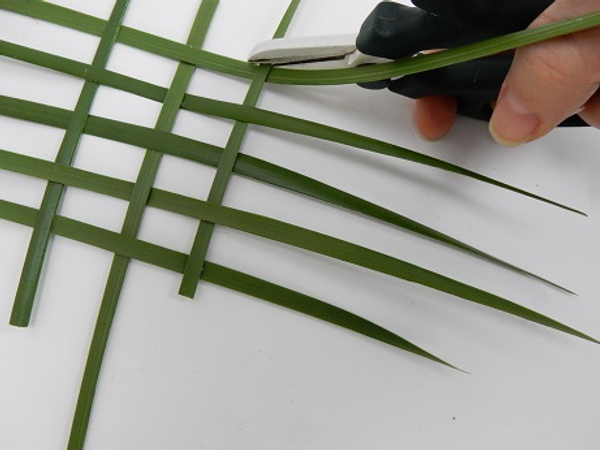
Cut the cross sections to end in the weave
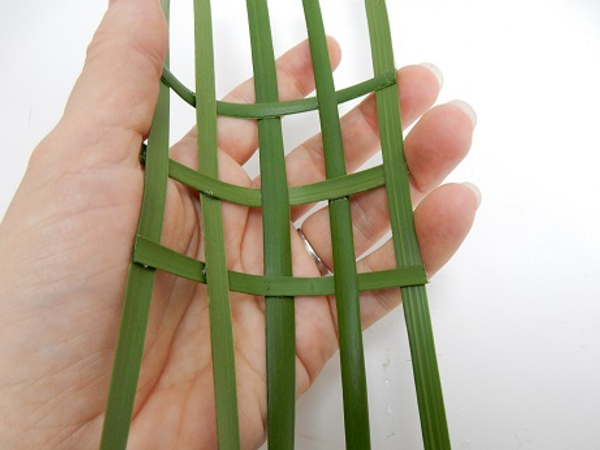
Start to bend the palm leaves by resting it in the palm of your hand. The heat of your hand helps to make the palm leaves more pliable

Gently bend the palm leaves to curve
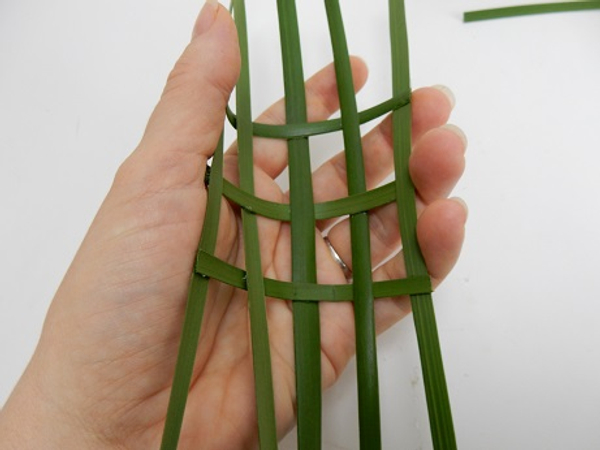
Slowly close your hand without folding or kinking the palm leaves

Gather the end pieces

And secure with a tiny drop of glue
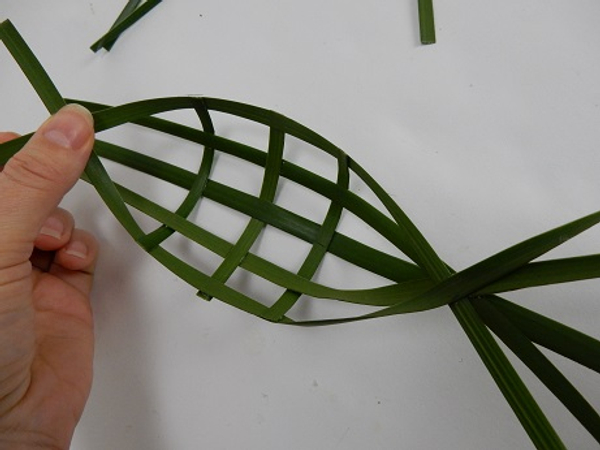
Do the same on the other side
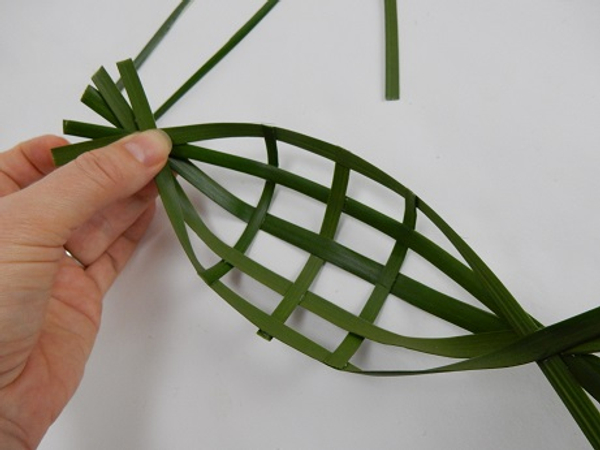
And secure this side with glue
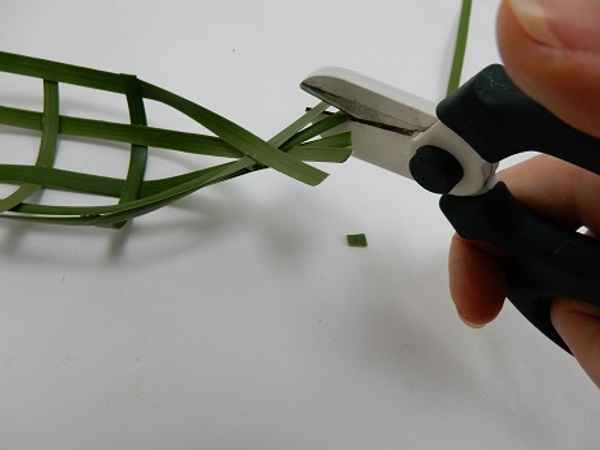
Cut the end pieces neatly
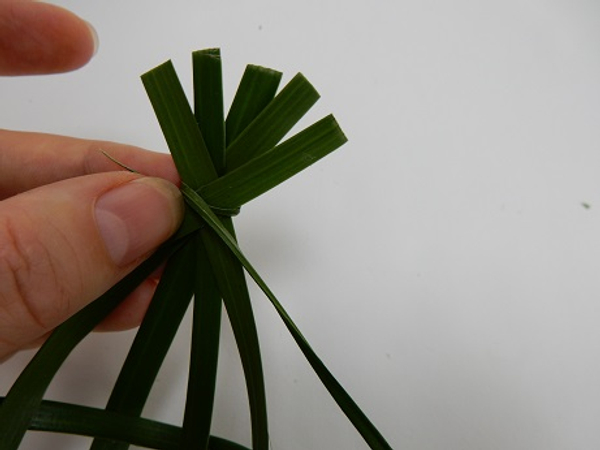
Cover the glued section with a thin strand of palm leaf. Simply make a decorative binding by wrapping the leaf around the connection
See the Tutorial below for detailed instructions on how to rip the leaf into strands

Knot the end piece on itself to secure
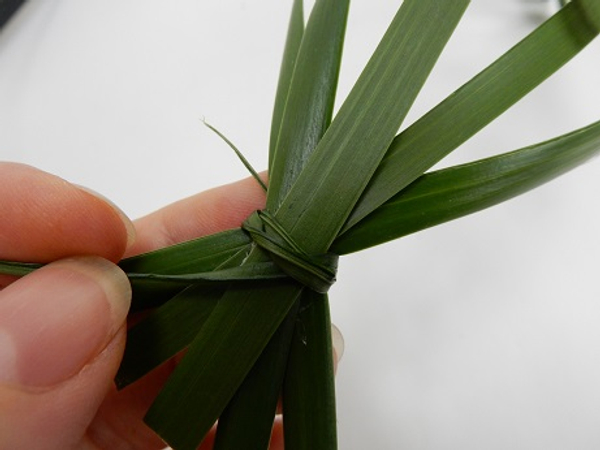
Pull tightly on the knot before cutting the dangling leg short
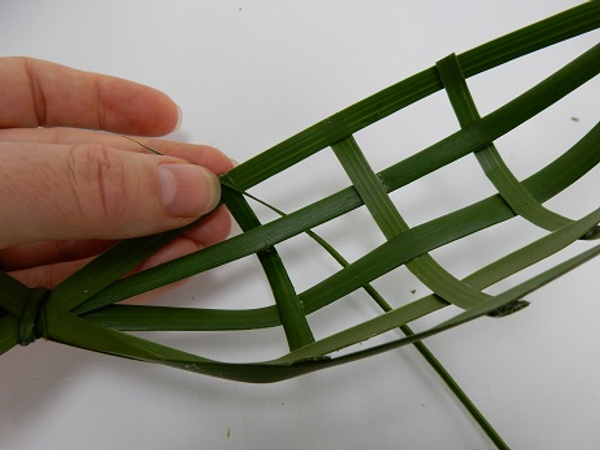
Do the same with the side connections. These knots are purely decorative but it does make a big difference in the look of the design
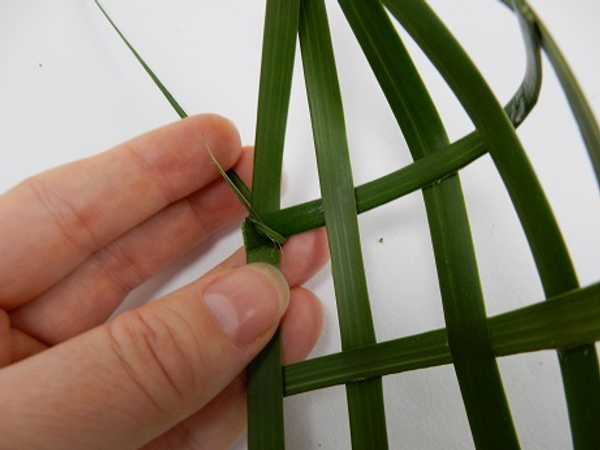
Bind the palm strand over the one side and then over the other to cross
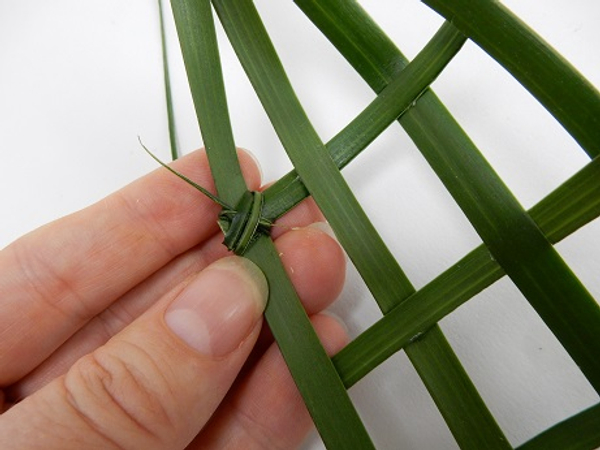
Knot the strand on itself to secure
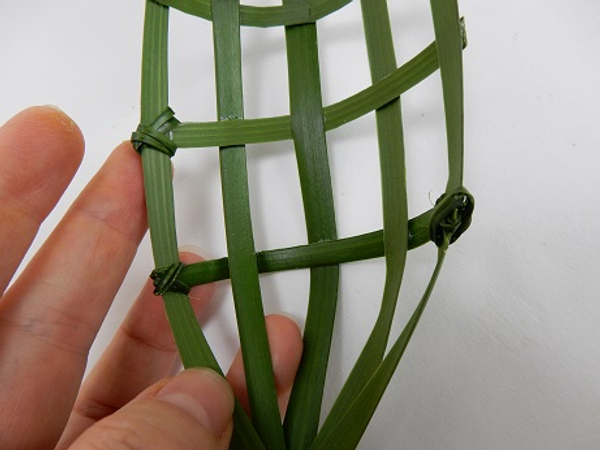
Continue to bind all the connections
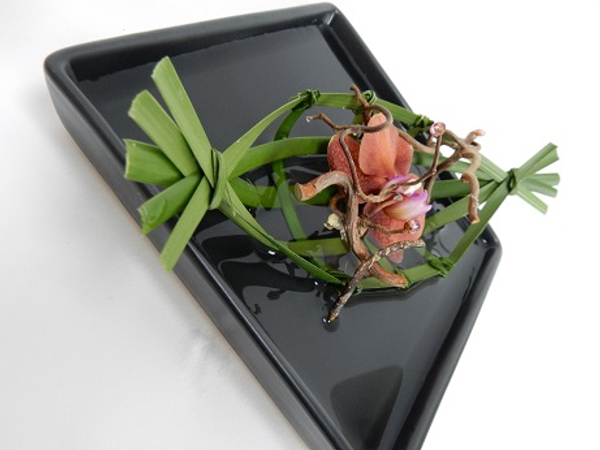
Rest the palm armature in the water and add the orchid
Sign up for my weekly newsletter
Every week I add a new design with related tutorials. Be sure to subscribe to receive an email notification with design inspiration.

